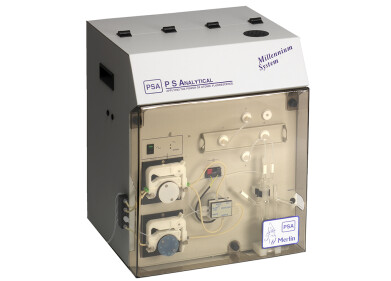Environmental laboratory
Environment Agency awards remote camera framework deal
Feb 27 2019
The Environment Agency (EA) has awarded a multi-year contract worth up to £2M to Meteor Communications for the supply of up to 800 remote camera systems. The cameras will build on an existing network of over 450 Meteor cameras that have been installed across the country over the last 4 years, monitoring critical flood infrastructure including grilles, screens, channels, culverts and automated remote structures. The new cameras are a valuable addition to the EA’s network of flood defences which better protect thousands of homes and businesses from flooding all year round.
Under the contract Meteor will supply the robust, low power, real-time MRC camera systems in addition to associated services, including secure hosting and web portal access. The cameras employ 3G/GPRS communications to provide continuous access to high quality images of important infrastructure via a secure web portal, with data integrated into the EA’s existing systems. Manging Director Matt Dibbs says: “This award recognises the value that is being derived from our cameras and enables a strategic change in the management of remote infrastructure; instead of conducting routine site visits, operational staff can be guided to the locations most in need. This lowers costs and carbon footprint, and improves the speed of response, which is of course critically important for flood infrastructure.
“There are a wide variety of applications for this technology, so in addition to the EA our customers also include water utilities, Network Rail, London Underground, construction companies and major UK airports.”
Gordon Wilson, Area Flood and Coastal Risk Manager for the Solent and South Downs, said: “The Environment Agency manages and maintains around 1,000 km of coastal defences, 7,000 km of flood defences and 17,000 structures.
“We are always looking for ways to make the most of technology. These remote cameras can help our operational staff to spot and resolve any issues quickly to help us better protect homes and businesses from flooding.”
The EA’s cameras provide early warning of blocked trash screens, and monitor other flood defence features such as storm drains and pumping stations. Flood and Coastal Risk Management Officers can monitor the cameras using any web enabled device using Meteor’s secure web portal, or via the EA’s own systems.
The Meteor Data Centre web portal allows images to be viewed in real-time, along with historic images, slideshows and galleries for ease of analysis.
Camera deployment can be adapted to suit the site and the application, and four versions of the camera are available to cover almost every requirement. The most commonly deployed version is the Complete Camera Pillar System. Supplied with a 28Ah battery pack and a 20W solar panel kit, the pillar can be deployed quickly and easily in remote locations; operating year round in all weather conditions.
A smaller Mini Pillar system, running on 12V DC or 240V AC power, is ideal for applications where the camera needs to be mounted on a pole, and a long rage camera version is popular for railway applications. Customers requiring the rapid deployment of an autonomous system are able to choose the portable system which is supplied with a PELI battery pack.
Once deployed, the cameras typically acquire and send an image every 60 minutes. Additional images can be requested at any time, via the website or directly by SMS or email. The cameras also offer an Enhanced Polling (EP) mode, which places the camera into a fast acquisition mode for a set period of time. This can be activated via the web portal; automatically with a level sensor, or by sending a command via email or SMS.
EP therefore provides users with access to more frequent images during periods of high water flow or level; raising visibility of site conditions with greater granularity of images at the most critical times. Alert emails are also sent when level sensors go into alarm, with an attached image, giving users instant warning and visual confirmation.
In some applications the cameras directly interface to the EA’s legacy systems (such as SETEL and SWANTEL) and also feed images directly to public access websites, data archives and social media feeds such as Twitter.
Digital Edition
AET 28.4 Oct/Nov 2024
November 2024
Gas Detection - Go from lagging to leading: why investment in gas detection makes sense Air Monitoring - Swirl and vortex meters will aid green hydrogen production - Beyond the Stack: Emi...
View all digital editions
Events
Jan 14 2025 Abu Dhabi, UAE
Jan 20 2025 San Diego, CA, USA
Carrefour des Gestions Locales de L'eau
Jan 22 2025 Rennes, France
Safety, Health & Wellbeing LIVE
Jan 22 2025 Manchester, UK
Jan 25 2025 San Diego, CA, USA




















